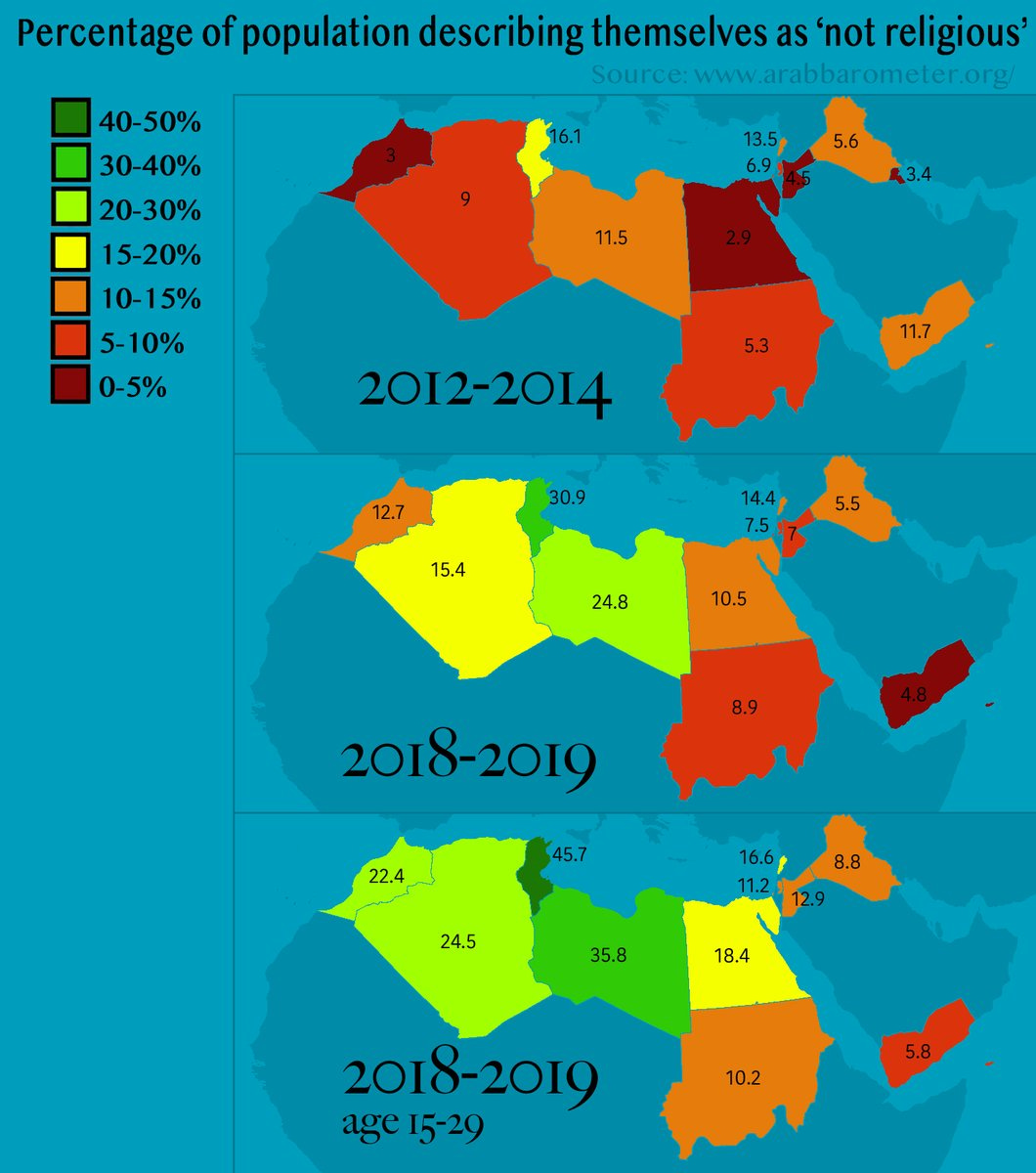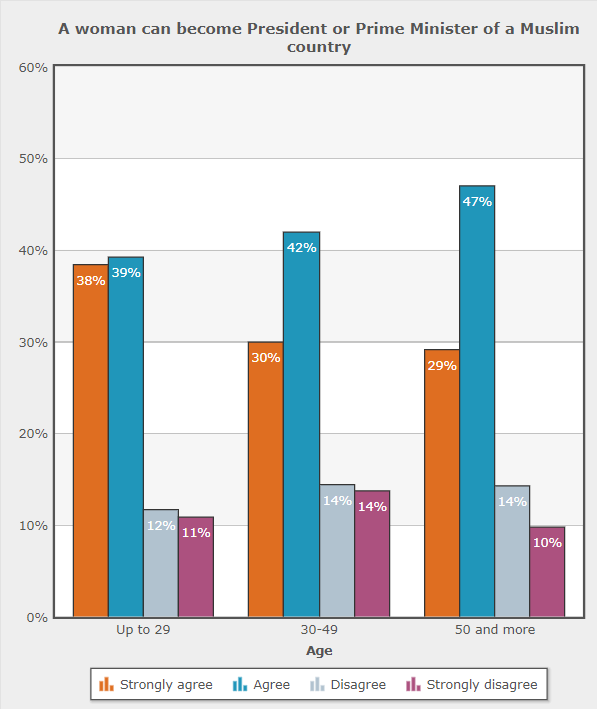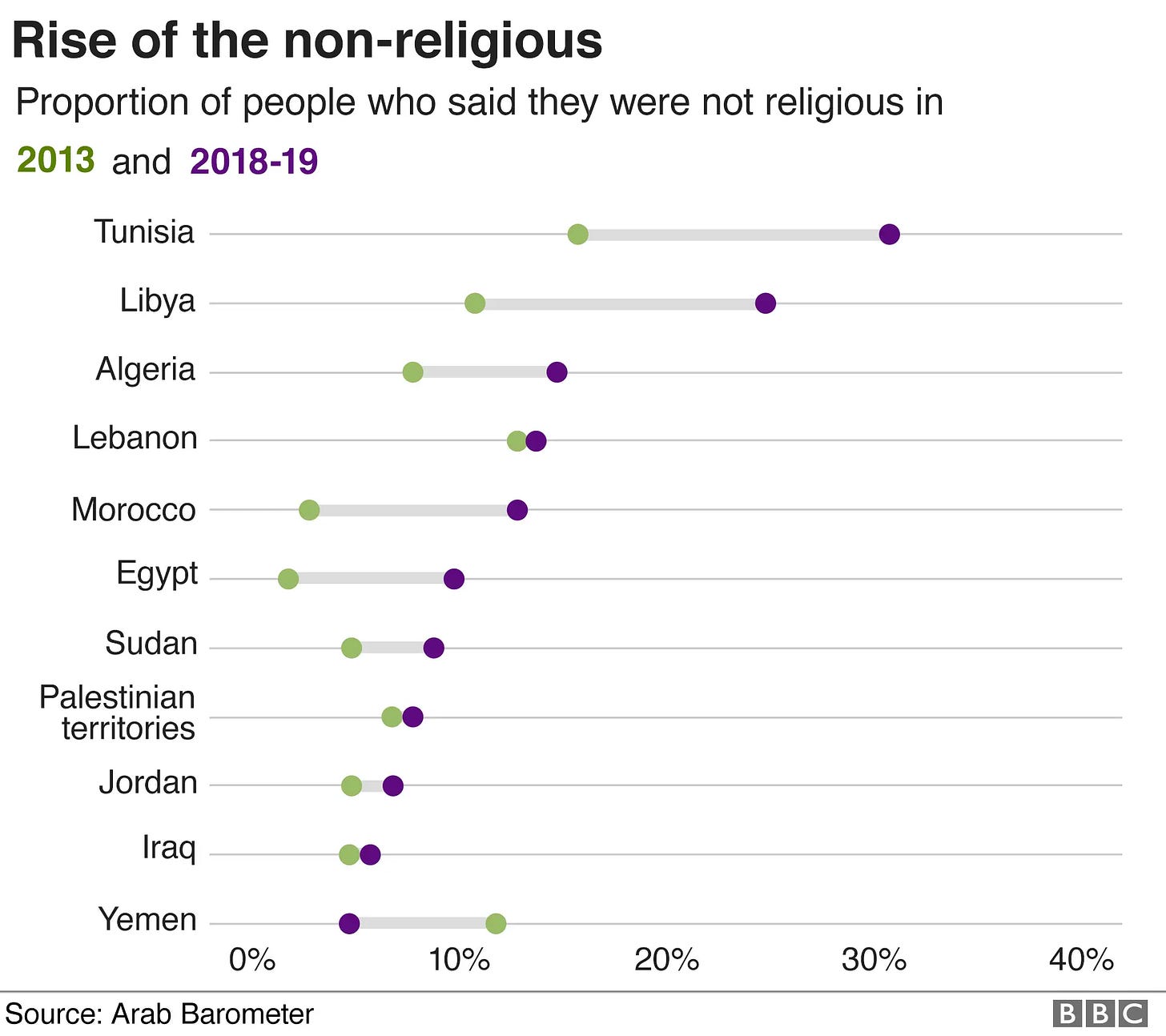According to Peter Thiel, “there are three plausible futures for western Europe: Islamic sharia law, totalitarian AI like China, or hyper-environmentalism.”1 While AI and environmental concerns are likely to increase over time, there is no indication that Islam is becoming more fanatical over time. Rather, the rightwing western media apparatus has placed a microscope on Islam, without any sense of proportion.
This magnification of Islam began with 9/11. Without engaging in any conspiracy theories, consider the origin of Osama bin Laden:
He was the son of Saudi billionaire, Muhammad bin Ladin. Most of Osama’s money was spent on building his terrorist network, but he still had over $29 million remaining at his time of death.
He first gained military experience during the Soviet-Afghan War. Most of the funding for Osama’s allies during that war came from the United States.
Saudi Arabia as a state is entirely manufactured by the United States. The wealth of the Saudi royal family is a bribe paid by America to uphold stability in the region. Additionally, the Mujahideen movement in Afghanistan was also propped up by the United States. In these two ways, Osama bin Laden was an American science experiment gone wrong.
I use the example of bin Laden to show that Radical Islamic Fundamentalism was not an inside job, but an outside one. The main source of extremism, the Salafists, are funded by America through their propping up of the Saudi regime.
Instead, the Middle East has been broadly secularizing since 1830. Emir Abdelkader, of Algeria, was a Freemason, and the Masons spread their influence throughout the region. In Turkey, Kemalism was secularist. In Iran, the tendency before the invasion of Persia in 1941 was toward secularism, as evidenced by the Persian Constitutional Revolution in 1905.
Despite the efforts of America and Israel to increase religious extremism, in order to weaken and debilitate secular Arab nationalists, the Middle East is still on the path to secularization.
The Middle East and Female Leaders
In 2021, Middle Eastern countries were polled on the question, “can a woman be a leader of a Muslim country?” All seven of the countries polled answered “yes” in the majority.
To understand American opinions on this matter, we can look toward a 2023 study by Pew. Depending on whether the issue was education or gun policy, between 3% and 15% of Americans felt that a female president would be worse.
By comparison, only 3% of Moroccans are strongly opposed to female leaders, with the greatest opposition coming from Algeria at 21%. When "disagree" and "strongly disagree" are combined, Moroccan opposition is 8%, while Algeria opposition is 49%. Based on this data alone, it is not obvious that Moroccans have a view on gender which is entirely different from the American one, at least on the singular issue of female leadership. Even in Algeria, which was the outlier, “disagree” could still not muster a majority of respondents.
What happens when we sum all countries together, and break down respondents by age? For ages 50+, 24% disagree; for ages 30-49, 28% disagree; for ages 18-29, 23% disagree. There is no pattern of age increasing or decreasing the “disagree” camp. Similarly, for ages 50+, 76% agree; for ages 30-49, 72% agree; for ages 18-29, 77% agree. No pattern.
However, for the camp of “strongly agree,” age is a significant factor, where ages 18-29 are more likely than other groups to “strongly agree.” What this indicates is that over time, “agree” is shifting to “strongly agree.”
When asked whether women should work alongside men, most respondents were agreeable to the idea, with younger respondents being more friendly to it than older respondents. 62% of ages 18-29 wanted mixed workplaces, as opposed to only 57% of ages 50+.
When broken down by religion, it is clear that Muslims have a drastically different gender ideology than Christians, non-Muslims, and residents of “no religion.”
Muslims, on average, trust their religious leaders far less than the army, which is the most secular institution in middle eastern countries.
Non-religious residents were more likely to support Israel, but all categories opposed Israel in the majority.
Of self identified Muslims, 8% were not religious, while 41% were somewhat religious.
Residents are clearly becoming less religious over time, with the difference between ages 18-29 and ages 50+ being a whopping 23%.
Self reported religiousness generally declined from 2007 to 2019, with a slight uptick in 2022.
The uptick in religion between 2019 and 2022 was also seen when measuring the percentage of respondents who felt that religious clerics should have a say over government.
Countries which have defied this trend include Egypt (remaining at 20%), Tunisia (decreasing slightly to 23%), and Lebanon (increasing slightly to 22%). Part of the reason for the increase in religiosity might be the effect of the COVID global recession.
One country which became more religious during the 2013-2018 period was Yemen. Part of this is due to the Yemeni Civil War, which has been ongoing since 2014.
Across the board, a decline in self-reported religiousness almost always correlated with less trust in religious leaders, less trust in political Islam, and less mosque attendance.
In Iran, the trend also holds true. There is also indication that the trend exists in Turkey.
All of this is in stark contrast to the trend in Israel. There, the ultra-Orthodox are expected to double in size in the next generation, from 14% of the population to 28% of the population. If there is an Abrahamic future, it is sooner to be found there than anywhere else.




















George Galloway getting elected to the Westminster parliament is an intresting development.
The post 1945 Liberal paradigm in Europe is coming under pressure from both the new immigrat population and the White population, angry at the scale of immigration/ cheap labour coming in.